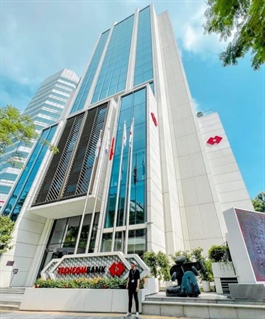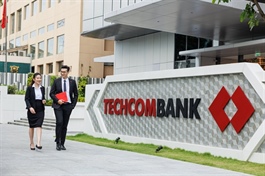CIT eligibility may help pull in investment
CIT eligibility may help pull in investment
Many enterprise owners seek to be made eligible for tax incentives under new legislation, as part of the country’s efforts to lure in more funding and expand production.

New tax frameworks are expected to help enterprises get more funding and expand domestic production, photo Le Toan |
According to the draft decree on guiding the implementation of the Law on Corporate Income Tax (CIT), which has been submitted for approval, the Ministry of Finance proposes expanding incentives, extending periods of tax exemption and reduction, and applying lower tax rates for prioritised projects.
These aim to support businesses and promote investment in key sectors and priority areas.
Under the draft, enterprises with income eligible for incentives under this law will be exempt from CIT for four years and benefit from a 50 per cent tax reduction for the following nine years.
This exemption and reduction policy also applies to income generated from enterprises operating in vocational education and high-level skills training, provided they are located in incentivised areas.
If such enterprises operate outside these incentivised areas, the four-year tax exemption still applies, but the 50 per cent tax reduction is limited to a maximum of five subsequent years.
For certain other categories, the tax incentives are defined as a two-year exemption and a 50 per cent decrease for the following four years. In the case of new ventures in especially encouraged sectors, the government is authorised to extend the exemption and reduction period up to 1.5 times the standard duration mentioned above, provided that the total incentive period does not surpass the lifespan of the project.
The draft specifies that the tax exemption and reduction period is calculated from the first year the enterprise generates taxable income from the undertaking. If the enterprise does not have taxable income within the first three years of generating revenue, the exemption and reduction period will start from the fourth year.
The draft also includes detailed provisions regarding tax incentives for business expansion. If an enterprise expands its operations, whether by increasing scale, enhancing capacity, upgrading technology, reducing pollution, or improving the environment, any additional income generated from the expansion will receive the same tax incentives as the existing scheme for the remainder of the applicable period.
The draft decree also proposes a preferential tax rate of 10 per cent for 15 years for income from certain new projects in incentivised sectors or in areas with difficult or extremely difficult socioeconomic conditions. Eligible areas include high-tech zones, high-tech agricultural zones, dedicated digital technology parks, and economic zones subject to tax incentives.
Additionally, a 10 per cent tax rate without a time limit will apply to specific cases, such as enterprises operating in incentivised sectors within incentivised locations; publishers, cooperatives, and cooperative unions operating under current regulations; and media agencies carrying out activities aligned with priority sectors.
A tax rate of 15 per cent is proposed for income generated from specific business activities not located in incentivised areas.
For new initiatives in certain priority sectors, implemented in economic zones or areas with difficult socioeconomic conditions (but not in areas qualifying for special incentives), a preferential tax rate of 17 per cent will be applied for a period of 10 years. For certain specific activities, the 17 per cent tax rate may be applied indefinitely.
These consist of new investments with capital of $240,000 or more, those producing globally competitive products, achieving annual revenue of $800 million within five years of revenue generation, consistently employing 6,000 workers or more, or investing in essential economic and technical infrastructure.
The draft decree, once enacted, is expected to create momentum for the country to pull in more funding and expand domestic production.
Figures from the National Statistics Office showed that in the first seven months of 2025, the number of businesses registering to halt performance hit 88,600, up 13.6 per cent on-year.
Moreover, 41,500 enterprises halted operations to await dissolution procedures, up 16.7 per cent on-year; and 14,300 businesses completed such procedures, up 20.5 per cent on-year. On average each month, 20,600 enterprises left the market.
- 10:52 28/08/2025




























